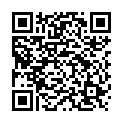|
|
|
| Module code: KI741 |
|
4V (4 hours per week) |
|
6 |
| Semester: 1 |
| Mandatory course: no |
Language of instruction:
German |
Assessment:
Written exam, composition
[updated 26.02.2018]
|
KI741 Computer Science and Communication Systems, Master, ASPO 01.04.2016
, semester 1, optional course, telecommunications-specific
KIM-GSYS (P222-0084) Computer Science and Communication Systems, Master, ASPO 01.10.2017
, semester 1, optional course, telecommunications-specific
PIM-WI79 (P222-0084) Applied Informatics, Master, ASPO 01.10.2011
, semester 1, optional course, informatics specific
PIM-GSYS Applied Informatics, Master, ASPO 01.10.2017
, semester 1, optional course, informatics specific
PIM-GSYS Applied Informatics, Master, SO 01.10.2026
, semester 1, optional course, informatics specific
|
60 class hours (= 45 clock hours) over a 15-week period.
The total student study time is 180 hours (equivalent to 6 ECTS credits).
There are therefore 135 hours available for class preparation and follow-up work and exam preparation.
|
Recommended prerequisites (modules):
None.
|
Recommended as prerequisite for:
|
Module coordinator:
Prof. Dr. Michael Igel |
Lecturer:
Prof. Dr. Michael Igel
[updated 01.04.2003]
|
Learning outcomes:
After successfully completing the course, students will have acquired basic theoretical knowledge of communication technology in residential and functional buildings,
as well as building systems technology. In addition, students will be able to apply the knowledge they have acquired to carry out practical planning projects and to develop and document technical solutions for a given task in the field of building systems technology.
Conceptional application of concepts from building systems technology
The automation of processes in functional and residential buildings using EIB
Planning and implementation of network topologies based on the EIB
Analysis of protocols and EIB telegrams
Process-related selection and project planning of EIB actuators and sensors
[updated 26.02.2018]
|
Module content:
1 Basics of communication technology
1.1 Serial data transmission
1.2 Asynchronous and synchronous communication protocols
1.3 Data flow control
1.4 Data backup (Hamming distance)
1.5 OSI model and EIB system
2 Modern building installation technology
2.1 Requirements on modern building installations
2.2 Limits of the conventional installation, advantages of the EIB system
2.3 Conventional installation
[updated 14.05.2025]
|
Recommended or required reading:
EIB für die Gebäudesystemtechnik, Michael Rose, Hüthig
Installationsbus EIB/KNX Twisted Pair, Robert Beiter, Hüthig & Pflaum
Elektro-Installation in Gebäuden, Dieter Vogt, VDE Verlag
Training materials from different manufacturers
[updated 26.02.2018]
|
Module offered in:
WS 2018/19,
WS 2017/18,
SS 2017,
WS 2016/17,
WS 2015/16,
...
|


